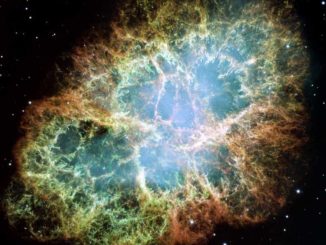
International Space Station



View the International Space Station at its best from the UK
If you have never seen the International Space Station (ISS), make the most of clear skies over the next few nights. It’s capable of exceeding Venus at its brightest and visible for up to 7 minutes as it crawls across the sky in an arc from west to east. Find out when and where to see some favourable passes of this 420-tonne, 109-metre-wide spacecraft over the British Isles and Western Europe.

See the International Space Station above the eclipsed Moon on 16 July
The serene beauty of the International Space Station gliding silently across the sky needs nothing more than the naked eye to appreciate. But when the dazzling ISS is also in conjunction with a partially eclipsed Moon, Saturn and Jupiter on the 50th anniversary of Apollo 11’s launch, be sure to look low in the southeast through south around 10:06pm BST on 16 July 2019!

Watch the International Space Station pass overhead from the UK
Have you ever seen the International Space Station (ISS)? It’s capable of exceeding Venus at its brightest and visible for up to 7 minutes as it crawls across the sky in an arc from west to east. Find out when and where to see some favourable passes of this 450-tonne, 109-metre-long spacecraft over the British Isles and Western Europe this week.


See the International Space Station pass overhead from the UK tonight
Urban dwellers may resign themselves to spotting the Moon, planets and the brightest stars with the unaided eye on a clear night, but every so often a bright satellite will catch your attention as it glides silently across the sky. The brightest is the 400-tonne International Space Station (ISS) whose orbit carries it directly overhead as seen from the British Isles and parts of Western Europe tonight.

Station-bound instrument to open new chapter in the story of cosmic rays
Physicists are gearing up to send a re-engineered science instrument originally designed for lofty balloon flights high in Earth’s atmosphere to the International Space Station next week to broaden their knowledge of cosmic rays, subatomic particles traveling on intergalactic routes that could hold the key to unlocking mysteries about supernovas, black holes, pulsars and dark matter.

See the International Space Station, Moon and Saturn in the UK sky tonight
The serene beauty of the International Space Station sailing silently overhead needs nothing more than the naked eye to appreciate. But when the dazzling ISS is also in conjunction with a pair of prominent Solar System bodies — such at the Moon and Saturn on the night of 2 August 2017 in the UK — you may wish to grab your binoculars and look low in the south-southwest just before 11:20pm BST.

Experiment devoted to neutron star research installed on space station
A NASA instrument built to help astronomers learn about the structure and behaviour of neutron stars, super-dense stellar skeletons left behind by massive explosions, has been mounted to an observation post outside the International Space Station after delivery aboard a SpaceX supply ship earlier this month.
